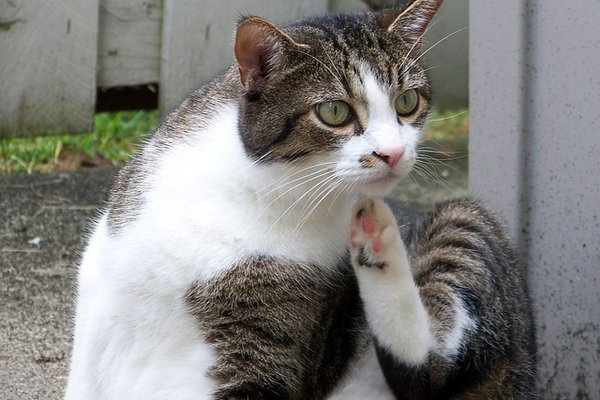We all want our cats to live comfortable and happy lives - and to a great extent, we succeed. However, there is a constant source of irritation that our feline friends must put up with - fleas! Fortunately, there are now effective medications and management approaches that can control these nasty parasites - but all the data we have suggests that in this case, prevention is MUCH better than cure!
What is a flea?
Fleas are parasitic insects; while they lack wings, they can jump a remarkably long distance, which helps them move from host to host. It also helps them to evade scratching claws or licking tongues! Fleas feed on blood, and are remarkably unconcerned as to whose it is. While the most common species in the UK is the Cat Flea (Ctenocephalides felis) the name is something of a misnomer, as this species feeds happily on dogs, rabbits, and even humans as well as our feline friends.
One of the problems with determining if a cat has a flea problem is that only the adults live on the cat’s body - and they can jump away and hide when you go looking for them. The adult flea lays her eggs (40-50 a day) and passes her faeces in the coat, so you may see flea faeces like black sand deep in the fur. These then fall off into the environment, and the eggs hatch into maggot-like larvae. These larvae live in the soft furnishings, carpets, and between floorboards of your house, feeding on adult flea faeces. In optimum conditions, the larvae can complete their life cycle in under 2 weeks - and of course, we like to keep our houses warm and comfy for us, which is really helpful to the fleas!
Most studies suggest that about 95% of the flea population in a house is actually living as larvae or pupae (like a chrysalis, as the larva reorganises itself into an adult) in the environment.
Is my cat really likely to pick up fleas?
Yes - unfortunately, they can’t avoid the creatures. Outdoor cats pick up fleas who “hop on board” for a meal from other cats or wildlife that they meet. However, indoor cats will pick them up as well, on visits to grooming parlours, vets, or even carried into the home hiding in your clothing.
As a result, we’ve sadly come to the conclusion that all cats are potentially at risk of flea infestation, unless they have been treated to prevent it. We might not see the fleas - cats are expert groomers! - but that doesn’t mean they aren’t there.
Aren’t some pure breeds of cat immune to fleas?
It would be lovely if this was true, but sadly, it isn’t. It may be harder to see the fleas in some types of coat, but that doesn’t mean they aren’t there!
Why are fleas a problem?
Firstly, the bites itch! Even if a cat isn’t allergic, it’s still uncomfortable for them.
Secondly, some cats are allergic to flea saliva - we call this Flea Allergic Dermatitis, and it typically presents with an exaggerated itch response to even a single flea bite, and lumps or scabs in the skin (sometimes called miliary dermatitis).
Fleas also transmit infections - most importantly, the common tapeworm (Dipylidium caninum), although other diseases may be spread by bites as well.
Finally, the blood-sucking of fleas is rarely a problem for healthy adult cats, but in small kittens a severe infestation can even lead to a dangerous anaemia.
How can we treat an infestation?
Once an infestation is established in a house, it can be very difficult to treat. Treating all the cats (and any dogs or other pets) in the house with medications to kill the adults will help, but it is important also to remove the fleas from the environment. This typically involves vacuum cleaning and sometimes even the use of insecticidal sprays - although as the active ingredients aren’t good for cats, we wouldn’t recommend those except as a last resort.
On average, however, studies suggest that it takes 3 months at least to rid a house of an established infestation. As a result, we strongly suggest that prevention is better than cure!
What do you recommend for prevention?
There are a range of very safe and very effective medications that can be prescribed by our vets. Unlike some of the supermarket or “over the counter” products, these have had to prove their safety in cats, and their effectiveness. These are available as spot-ons and as tablets.
Of course, every cat is a unique individual, with their own specific requirements. That’s why we don’t have a blanket “flea policy” - it depends what is most suitable for your cat, and their specific lifestyle.
If you’re worried about fleas, or think that your current control regime isn’t working, do book an appointment to talk to one of our vets. They’ll be able to help you to find the optimum solution to keep your cat flea-free!


